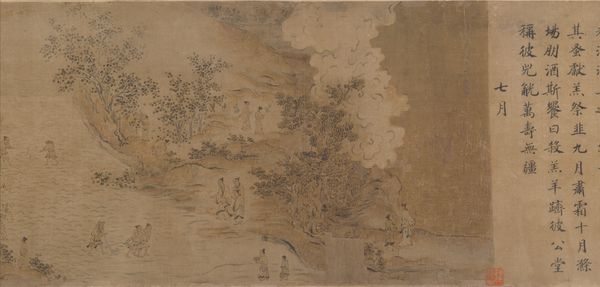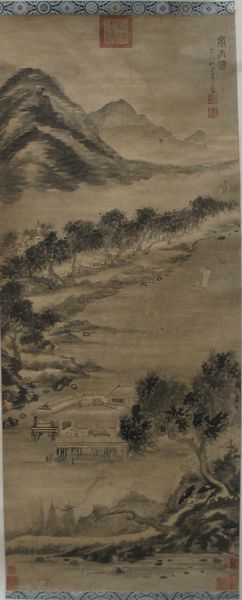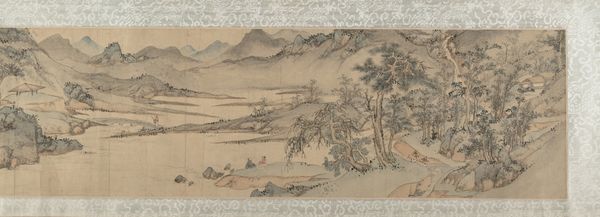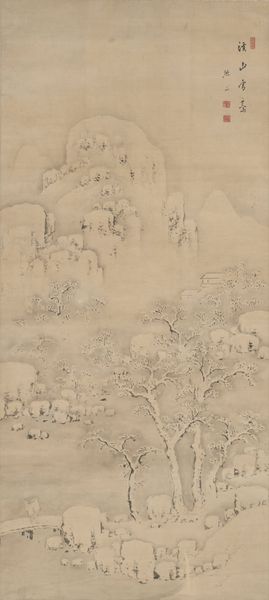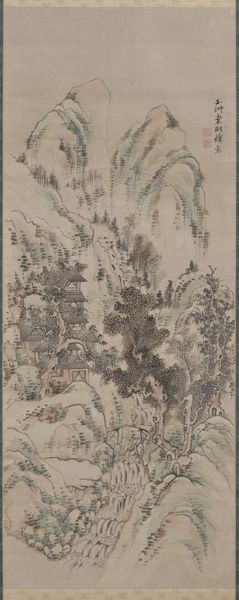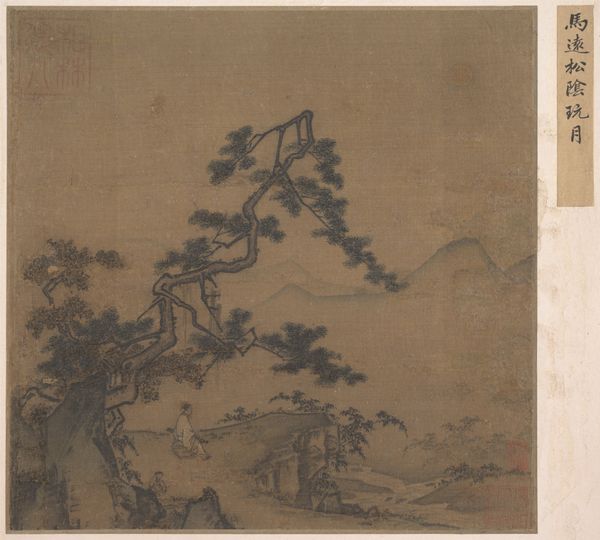
ink
#
ink painting
#
asian-art
#
landscape
#
figuration
#
ink
#
realism
Dimensions: 30.3 × 381.7 cm
Copyright: Public Domain
Curator: Standing before us is "One Hundred Cranes," an ink painting possibly created during the Qing dynasty, anytime between 1644 and 1912. Editor: Wow, the monochromatic tones create a rather calming effect, don't you think? A sprawling landscape of gentle, misty mountains filled with what appears to be an abundance of graceful cranes. There's something inherently serene and ethereal about it. Curator: Indeed. The prevalence of cranes is no accident. Historically, in Chinese art, cranes often symbolize longevity, wisdom, and a connection to the divine. A grouping of one hundred magnifies this symbolism; in this context, its an overt reference to power within nature. Editor: Power, but also fragility perhaps? I'm interested in the tension of these birds and landscapes placed side-by-side and the ecological politics represented when it comes to preservation and what is prioritized. Considering its period, this image and all its implications were undoubtedly shaped by an era of significant socio-political transition. The representation of natural power juxtaposed against actual historical power struggles, particularly as colonial influence loomed. I’d wonder about the function of such a representation in contemporary life. Curator: That's a fascinating way to interpret it, considering the history. Ink painting has always been intertwined with scholarship and power, it acted as both a reflection of society and a method to inscribe power. Also the work’s creator, Shen Quan, who mastered a meticulous realism is working within those structures too, this art piece is more complex when analyzed within its power structures and socio-historical dimensions. Editor: I appreciate the historical nuances in our consideration, but still, I'm mostly drawn to its visual simplicity. This simplicity feels somewhat at odds with all those layers. As someone consuming art, I’m drawn to how the landscape serves as this sort of expansive metaphor of cultural tensions; and maybe it makes us contemplate how those histories are remembered in nature. Curator: Ultimately, I hope it helps them find a new and powerful perspective in historical works. Editor: Absolutely.
Comments
No comments
Be the first to comment and join the conversation on the ultimate creative platform.
